My three main takeaways from measure camp toronto 2025
Measure camp 2025, a renowned community-based worldwide event in digital analytics, took place at Humber College’s downtown Toronto campus on Saturday, October 4th. This marks the second year of the event’s Toronto location. The organizers, including Jose, Marc, James, and Melissa, along with Humber College students, supported the event. The full agenda is available here.
This unique “camp” format eliminates keynote speakers, instead encouraging participants to propose topics and present or facilitate them in a workshop-like format.. The camp features multiple rooms, allowing participants to join events based on their interests. Attendance is free, and food is provided (in Toronto, sponsored by the organizer). The conference is always held on Saturdays, attracting enthusiastic participants.
I’ve been attending industry events in digital analytics and measurement field since 2017. Measure Camp is the natural evolution of eMetrics and Digital Analytics Association, with its clear mandate of “knowledge transfer” in an open environment. While keynote speaking may not suit everyone, I believe everyone has valuable insights to share, and the format is most welcoming.
Here are the three main takeaways for me
- GenAI usage and adaptation on this industry
- Connecting with peers beyond “networking”
- Stress-free presenting(facilitating) a session
Elephant in the room- genAI and the future of this profession
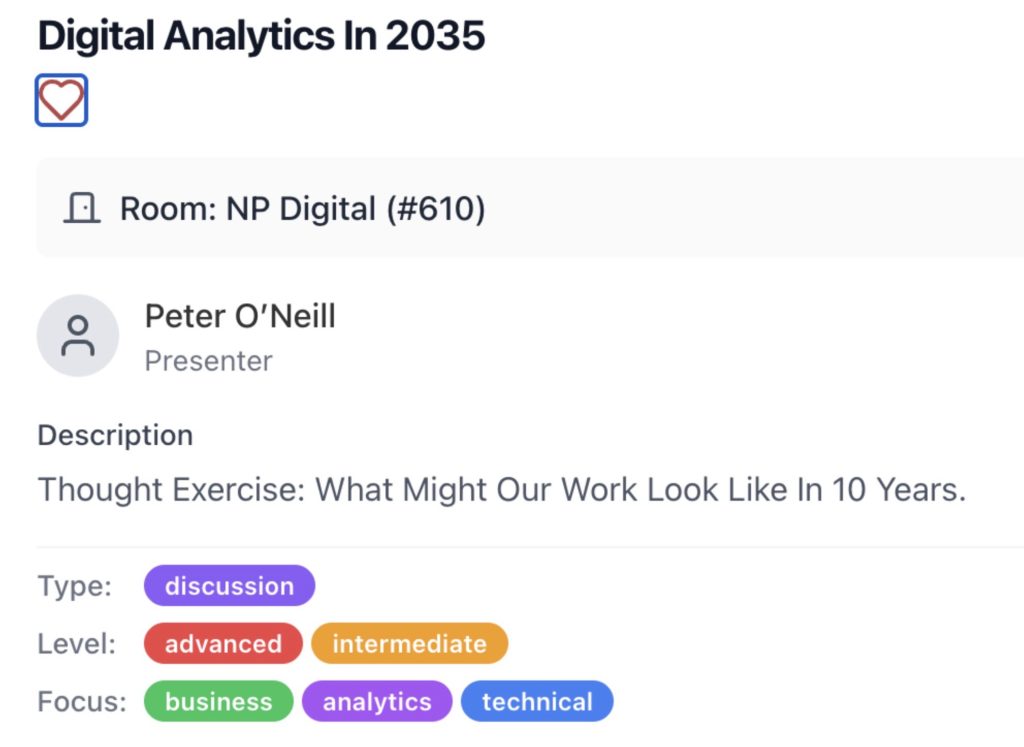
Who else better than Peter O’Neill, the founder of measure camp to facilitate this topic?
Peter broke down the typical digital analytics workflow
– Define business questions and requirements
– Data collections (define, design,document , instrument)
– Analysis and Insights
– Recommendations
– Decisions
– Digital Analytics tooling
He guided the room to take turns contributing input on the specific area, from short-term to long-term, which has the most potential to be replaced or evolved by generative AI tools.
Regarding data collection and analytics implementation, which is now super important to me, he mentioned that the genAI tool should be able to offer solution design and implementation guides sooner rather than later. However, he also thinks a great document should include examples, which I believe won’t be easily replaced by AI anytime soon. I think the examples should really help you understand the purpose and context of the digital properties. I’m definitely excited to give them a try!
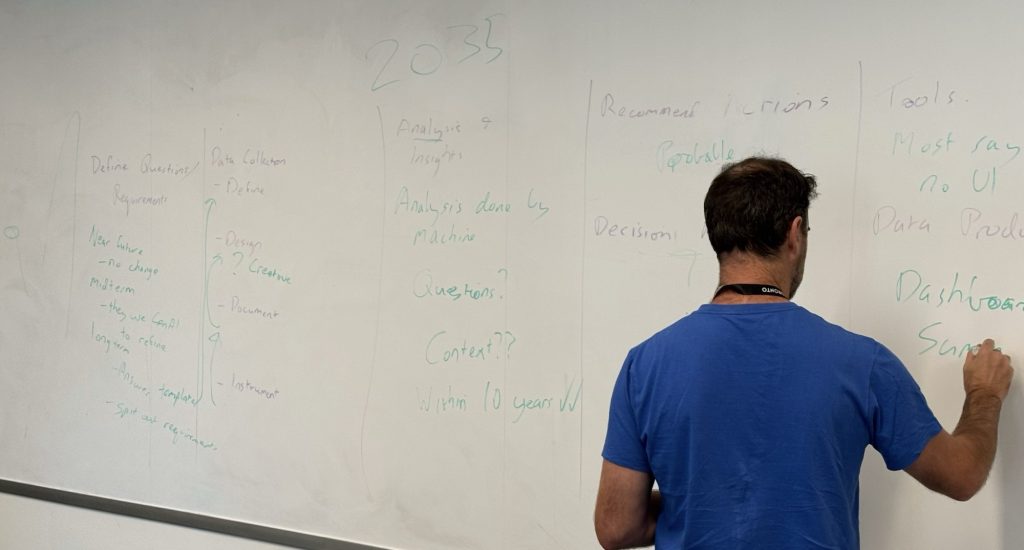
Data analysis, which I no longer focus on but still find fascinating, is expected to improve over the next two years with the help of evolving tools like GA MCP servers. However, achieving higher levels of analysis requires high-quality prompts.
Most participants, not including myself, believe that the user interfaces of analytics tools like GA, Adobe, and Mixpanel will become obsolete because natural language questions can be directly answered by MCP servers. However, I find this hard to believe because it would be against the best interests of each tool vendor.
The discussion concluded with a question about the value practitioners bring to the table if every email and message is written by ChatGPT. Our opinions should matter much more than AI, as the organization pays us for them.
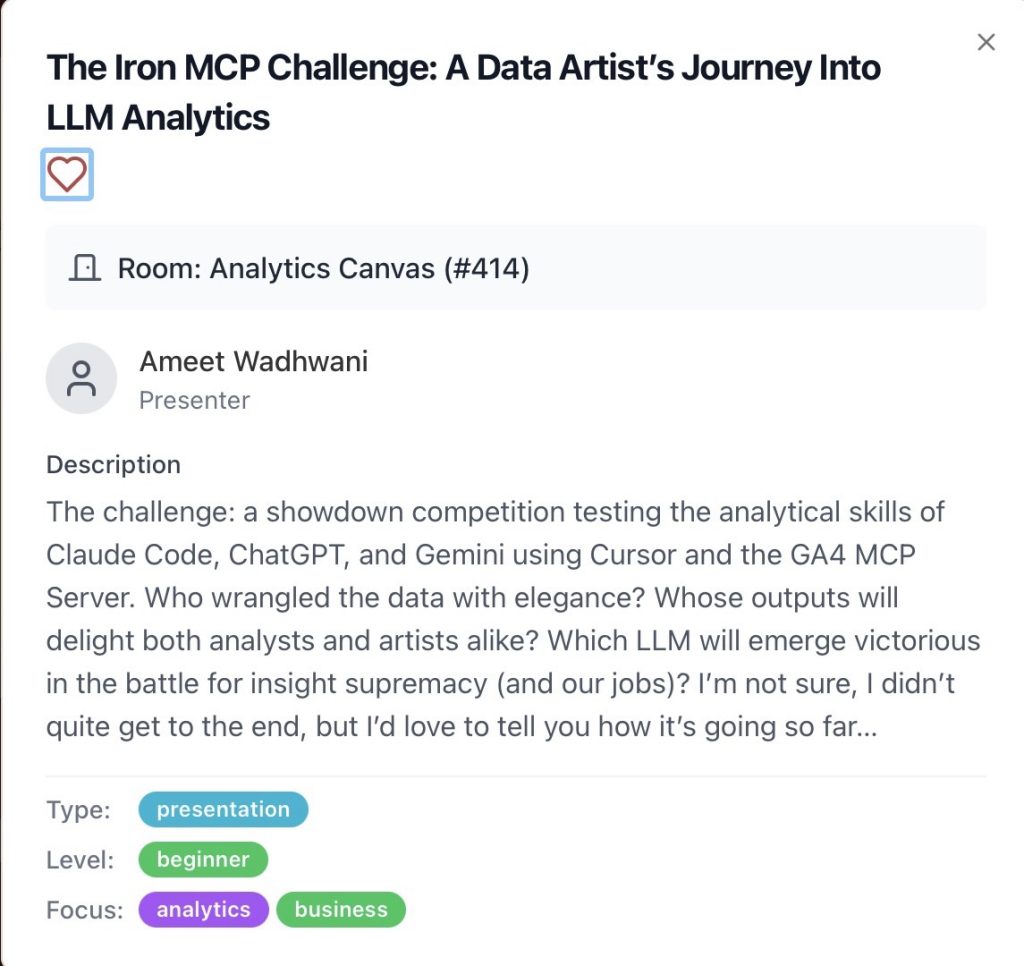
Later, I attended a follow-up tactical session comparing the performance across multiple LLMs, run by Ameet. The session was the first time I saw someone actually using GA4 MCP server to perform analysis tasks. Kudos to Ameet for having the courage to do a live demo in front of a packed room of audience! Judging by the size of the audience, it is apparent that this is how the industry is moving forward (or that is what the buzz is about).
It’s ironic that during Ameet’s demo, Gemini, Google’s native large language model (LLM), is clearly lagging behind in performance compared to Claude Code and Codex (ChatGPT) as a “junior analyst.”
Connecting with people beyond networking
“Networking” is the North American slang I picked up during my early years studying for my master degree. I don’t like this word. It reminds me of comparing human to objects .
Networking at Measure Camp Toronto feels personal and approachable. Conversations with new people are natural. The Saturday arrangement likely played a significant role. People willing to spend their Saturday at this session likely share strong professional interests. Once we find common ground, like digital analytics and measurement, it becomes natural to understand each other on a personal level.
This year, I met a business development manager representing a Japanese company expanding into North America. He shared his unique perspectives on navigating Japan and Canada. He wanted to sponsor Measure Camp but was too late. After further conversations, my initial negative impression of the vendor was reconsidered. He has the budget and needs to spend it. The success in generating leads wasn’t the main criterion. On the personal level, interestingly he mentioned that Japanese men, including himself, also do a lot of housework when living in Canada.
Another industry veteran showed me in depth how to debug one of the most commonly used cookie content management tool ~ one trust . By simply typing
OneTrust.testlog()
In to browser console , it can provide in depth info similar to dataLayer command.
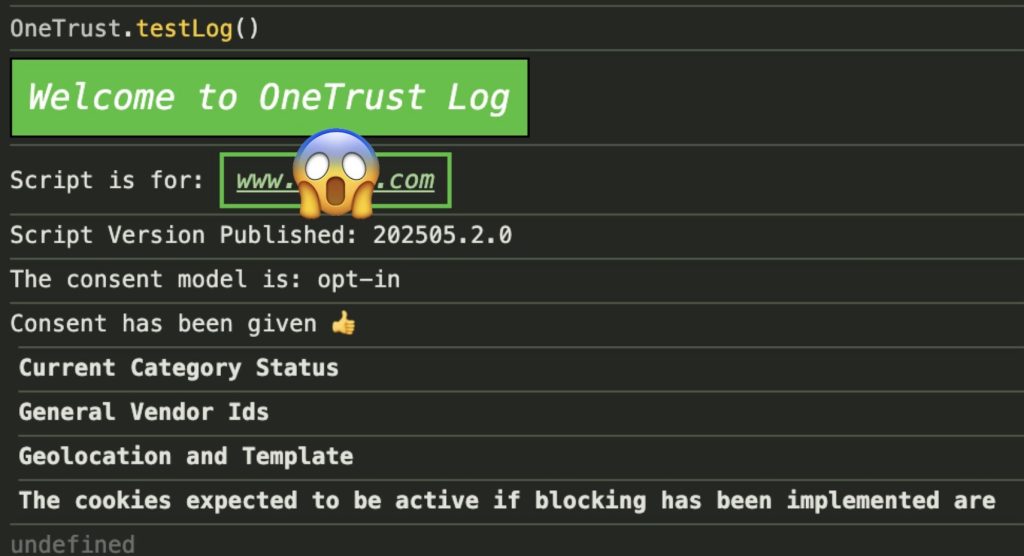
There is one more session I attended on adobe analytics domain.
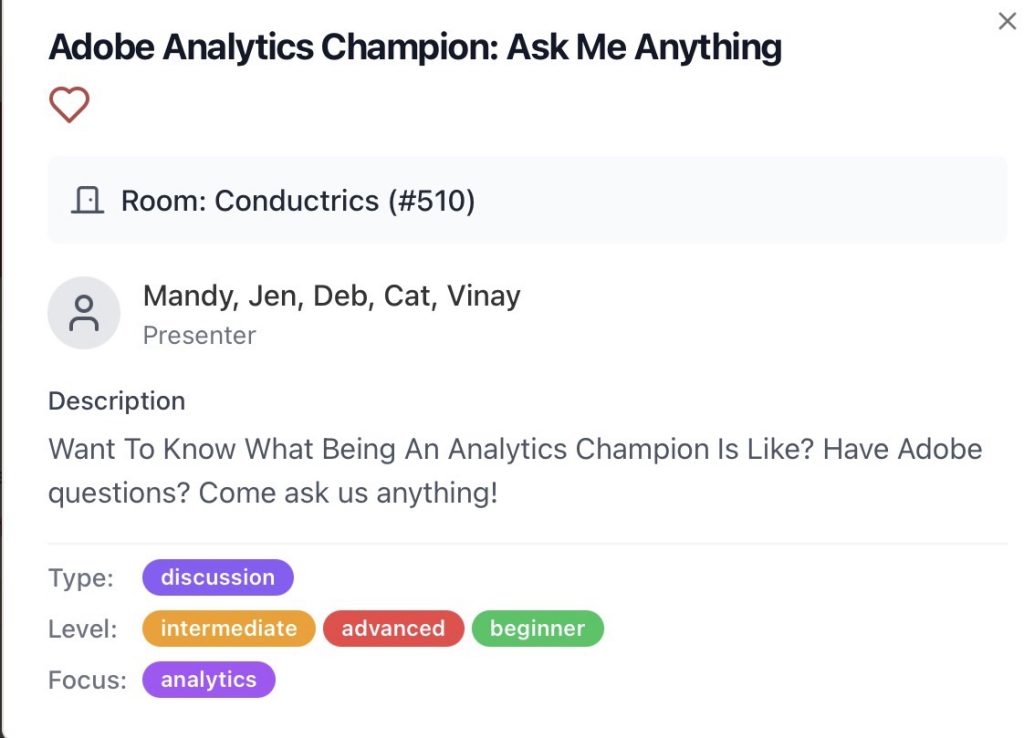
As a practitioner who intentionally chose the Google path 7 yrs ago, I have been avoiding the adobe topic for a while. This year I decided to give a try – both from practicality perspective (my team supports a a few adobe analytics implementation), as well as career interests side ( I kinda want to know what is going on and updates on Adobe side).
This AMA(ask me anything) session highlighted 5 “adobe analytics champions”. They are not employed by Adobe, instead they are nominated for their evangelizing efforts and contribution to the broader Adobe analytics community – primarily writing content and answering questions in a website called “experience league” hosted by Adobe.
The five presenters’ enthusiasm is truly impressive. They’re all technically proficient and genuinely care about helping others. For instance, when I asked a question about integrating GA dataLayer with Adobe Launch, they all offered unique insights. Interestingly, four out of the five presenters are female. Perhaps women are more drawn to less glamorous but impactful work, or it could be a coincidence.
Luckily, I got the chance to catch up quite with Vinay – who serves as the owner Adobe Analytics platform from a company called Juinper Network. The company he worked for was recently acquired by HPE, and he joined a much larger data and analytics organization . This resonates with my current situation so we connected instantly .
On stage not stressing out
Last year I came to measure camp prepared to stretch myself to give a talk. The session analytics implementation X software engineering was a success. At the same time, the pressure and stress coming along with the public speaking part was taxing. In short I had to prepare quite a bit before my scheduled session, and let the stress get the better of my for solid an hour. As a result, I wasn’t able to enjoy participating the session before mine.
Given that I already “unblocked” this experience from last year, This year I was hoping the be fully engaged , not missing anything interesting so I wasn’t prepared to run another session . Surprisingly, this year the meeting room scheduled wasn’t filled. Christopher Berry , who was kind enough to guide my session last year, asked me “ are you running a session today “. With a few minute of pondering , I think I need to fill the void here and give myself another chance.
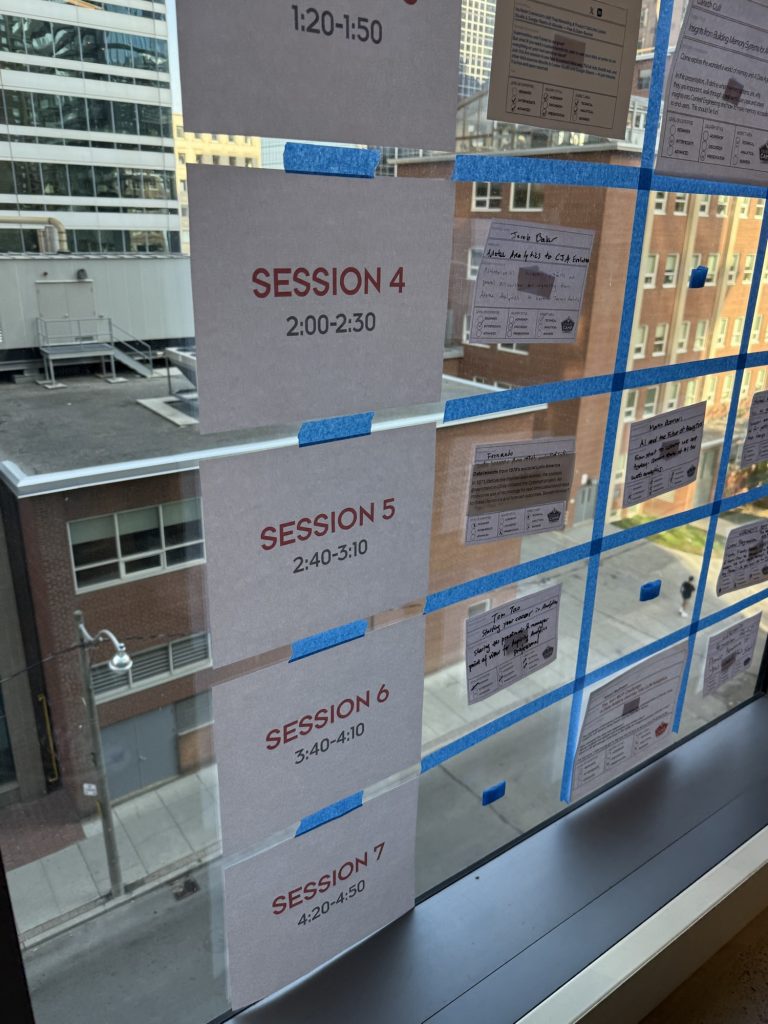
Coming up with a topic wasn’t that hard. Based on some early breakfast chat, I noticed there are a few students looking into break into this industry. So instead of answering each of their questions, hosting a discussion session would be a better use of my time. I spent a few minute writing a piece of session board, which become this following session.
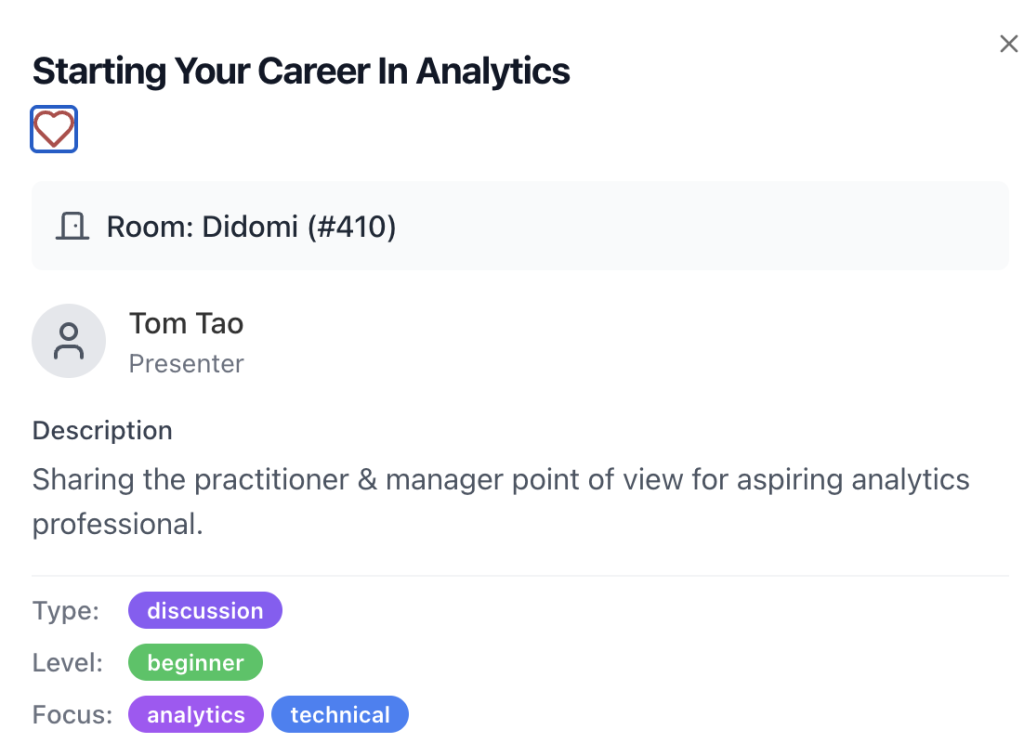
The delivery experience is also quite smooth. Around 15 people showed up to my session, slotted at 3:40pm . It is a bit less than last year , which I find it more suitable for a discussion session.
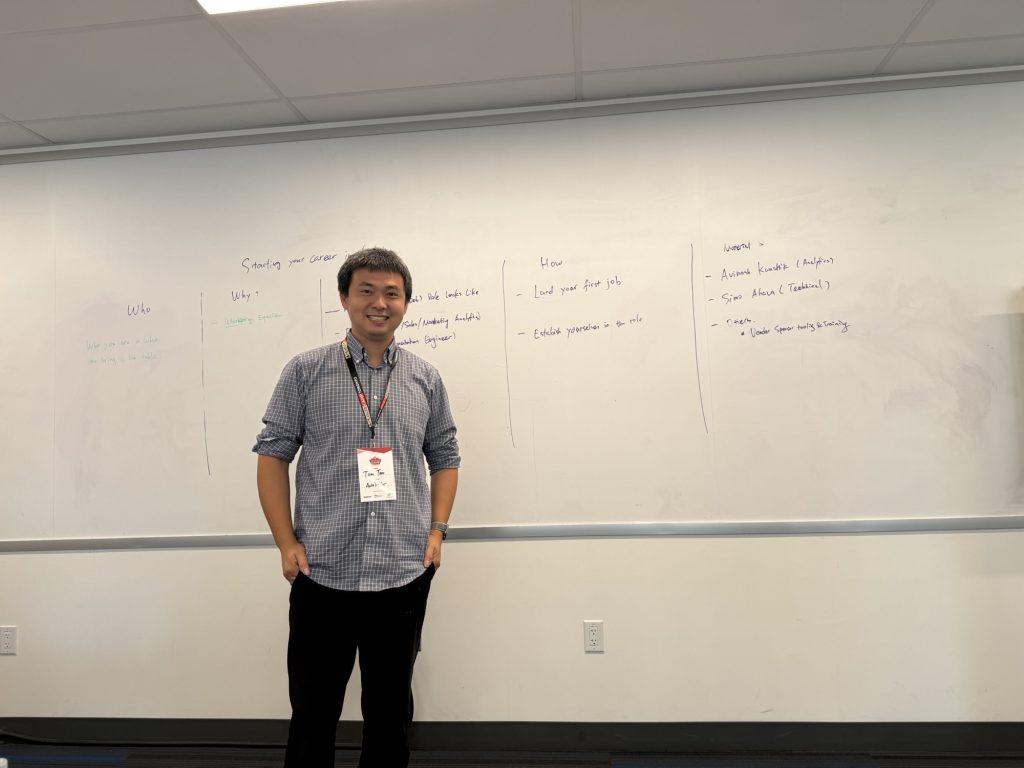
With last year’s experience under my belt, I didn’t feel stressed or nervous this time at all. Following the workbook how Peter ran his Digital Analytics 2035 session, I used the white board to organize my thoughts. There was some moments I feel like I was back on my student years standing on a classroom .
The engagement was great as well. I was able to interact with a few participants . They have all greatly enhanced the discussion . I was surprised to hear that there are quite a few of them are changing industries – one with 5 yrs of marketing experience , and one other with a few years of over sea experience on business system engineering .
The 30min of scheduled sessions flyed by quickly . I am quite content that I was able to give back to the community , while also brushing up my presentation and public speaking skills.